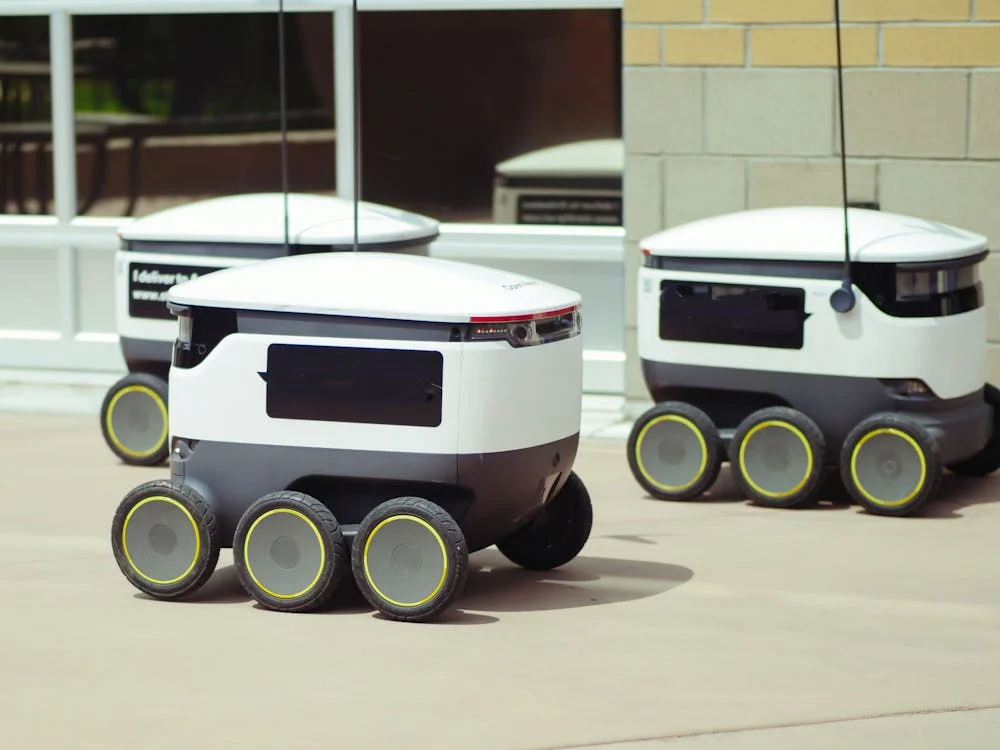The future of food delivery is no longer a distant dream but a rapidly approaching reality: unmanned systems. From sidewalk delivery robots to aerial drones, these technologies today promise faster, cheaper, and more efficient ways to get food to your doorstep. But transitioning to unmanned food delivery isn’t as simple as flipping a switch. This guide explores the key considerations for restaurants, delivery services, and entrepreneurs looking to implement unmanned food delivery systems.
1. Understanding the Landscape of Unmanned Delivery:
Before diving in, it’s crucial to understand the different types of unmanned delivery systems:
- Delivery Robots (Sidewalk): These small, autonomous vehicles navigate sidewalks and pedestrian areas to deliver food over short distances. They are generally electric, low-emission, and ideal for densely populated urban environments.
- Delivery Drones (Aerial): Drones offer rapid delivery over longer distances, bypassing traffic congestion.
Autonomous Vehicles (AVs): Larger, self-driving cars and vans can handle larger orders and deliveries across wider geographical areas, offering flexibility in route optimization.
Each type presents unique advantages and challenges in terms of cost, range, payload capacity, and legal considerations.
2. Key Considerations for Implementation:
Implementing unmanned food delivery requires careful planning and consideration of various factors:
- Regulations surrounding unmanned delivery are constantly evolving. Thoroughly research local, state, and federal regulations regarding autonomous vehicles, drone operations, and food safety. Obtain necessary permits and licenses.
- Infrastructure and Logistics: Evaluate your existing infrastructure and identify necessary modifications. This may include designated drone landing zones, robot docking stations, charging infrastructure, and integration with your existing ordering and dispatch systems.
- Technology and Integration: Choose a reliable technology provider offering robust navigation, safety features, and seamless integration with your current POS system and delivery platform. Consider factors like GPS accuracy, obstacle avoidance, weather resistance, and remote monitoring capabilities.
- Food Safety and Handling: Maintain strict food safety standards throughout the delivery process. Ensure that food is transported in temperature-controlled containers to prevent spoilage.
- Security and Anti-Theft Measures: Implement security measures to prevent theft or vandalism. This may include GPS tracking, cameras, and remote disabling capabilities. Customer Experience: Design a user-friendly experience for customers. Provide clear delivery instructions, real-time tracking, and secure delivery authentication. Offer customer support channels to address any issues or concerns.
Community Engagement: Engage with the local community to address concerns and build trust. Explain the benefits of unmanned delivery and address any potential disruptions or safety concerns.
3. Overcoming the Challenges:
Implementing unmanned food delivery is not without its challenges:
- Weather Conditions: Adverse weather conditions like rain, snow, and high winds can significantly impact the performance of delivery robots and drones. .
- Navigation Complexities: Navigating complex urban environments with unpredictable pedestrian and vehicle traffic can be challenging. Utilize advanced sensor technology and sophisticated algorithms to ensure safe and reliable navigation.
- Vandalism and Theft: Develop robust security measures to prevent vandalism and theft of delivery robots and drones.
- Partner with local law enforcement to address any instances of criminal activity.
4. The Future of Unmanned Food Delivery:
As technology advances and regulations become clearer, unmanned food delivery is poised to transform the food service industry. We can expect to see:
- Increased Adoption: As the technology matures and becomes more affordable, more restaurants and delivery services will adopt unmanned delivery systems.
- Enhanced Efficiency: Unmanned delivery will streamline operations, reduce delivery times, and improve overall efficiency.
- Expanded Delivery Range: Advancements in battery technology and drone design will extend the delivery range of unmanned systems, opening up new markets.
- Integration with AI and Automation: Artificial intelligence and automation will play a key role in optimizing delivery routes, managing inventory, and providing personalized customer experiences.
- Specialized Delivery Systems: We may see the emergence of specialized unmanned delivery systems tailored to specific types of food or specialized delivery environments.
Implementing unmanned food delivery systems presents both exciting opportunities and significant challenges. By carefully considering the factors outlined in this guide, restaurants, delivery services, and entrepreneurs can navigate the complexities of this emerging technology and position themselves for success in the future of food delivery. The key is to prioritize safety, compliance, customer experience, and technological innovation todayto unlock the full potential of unmanned delivery.
